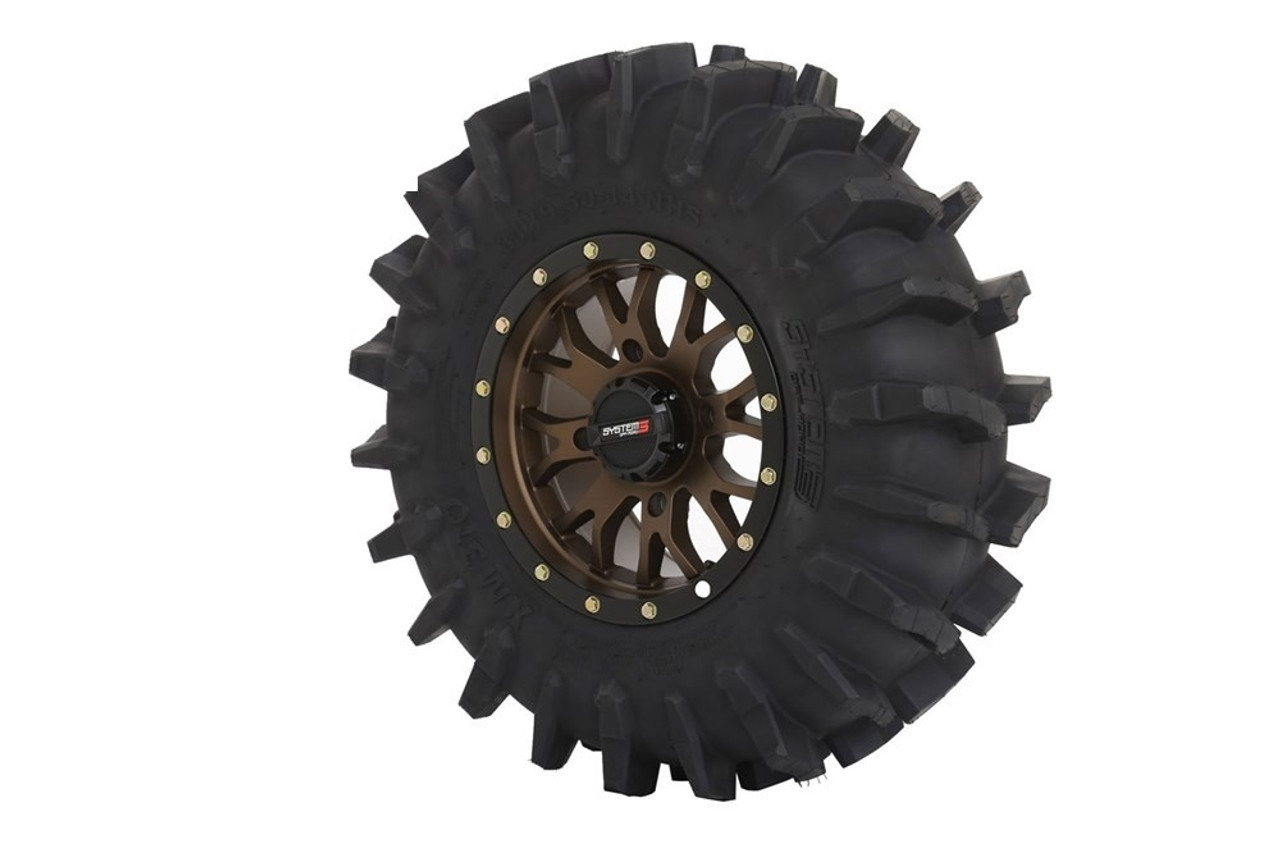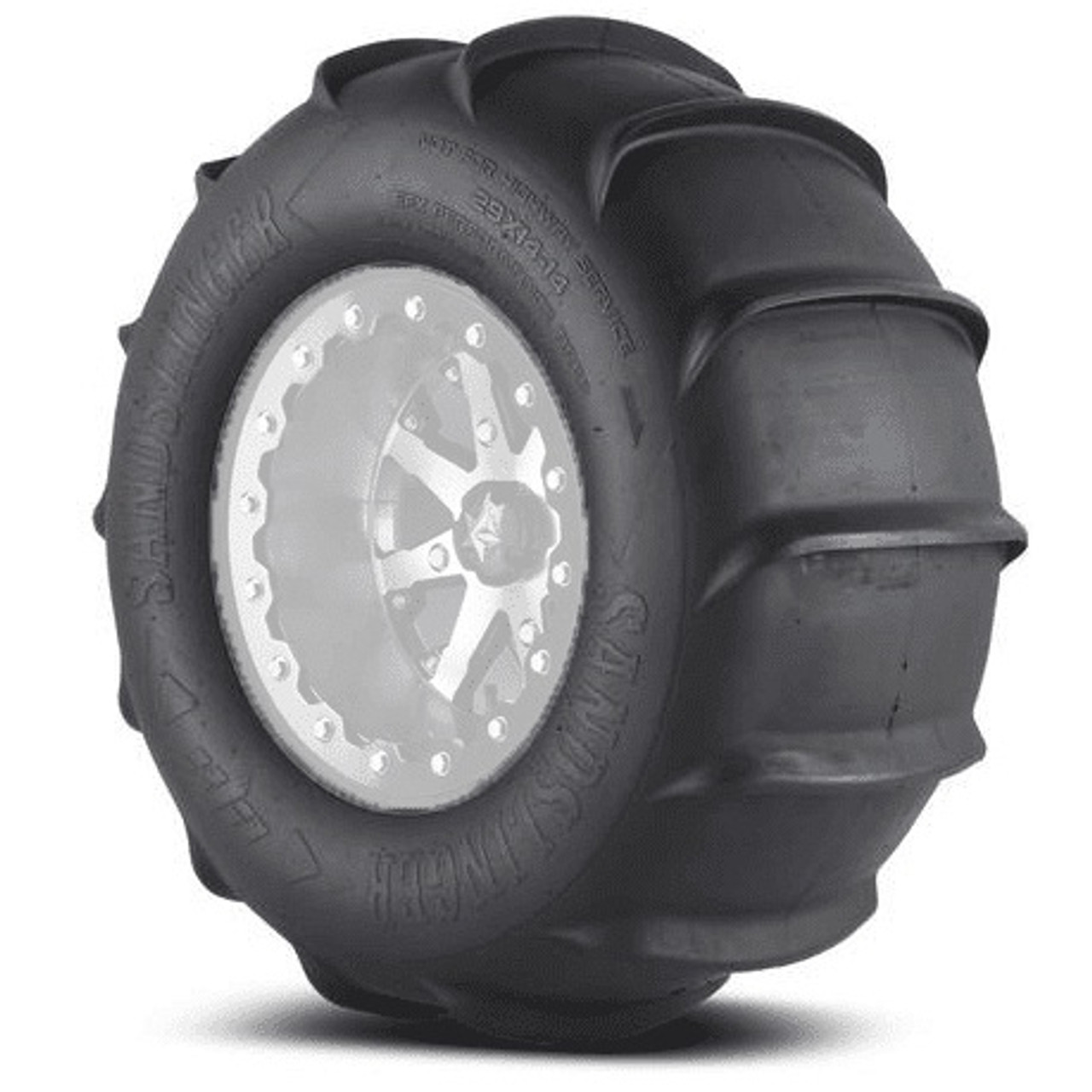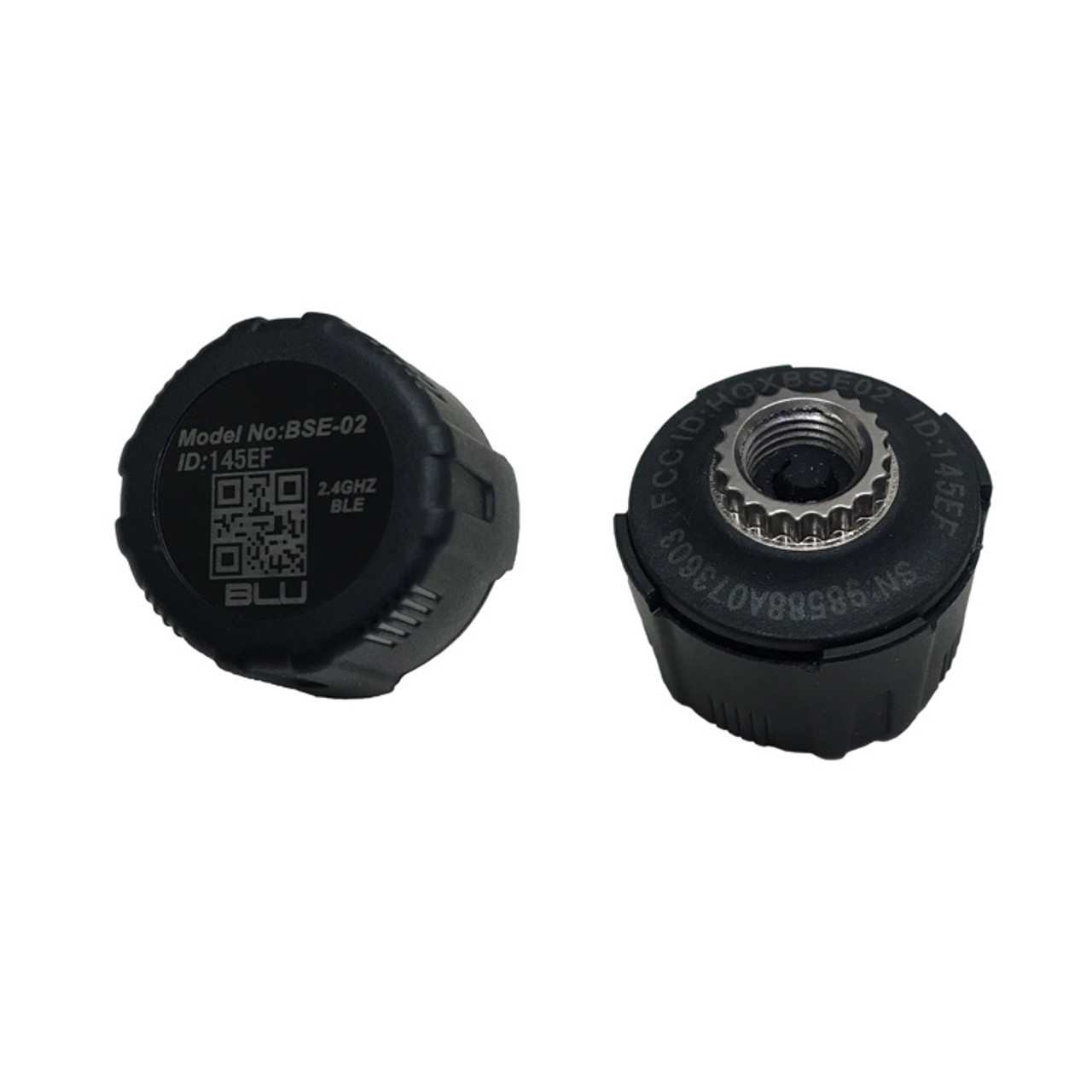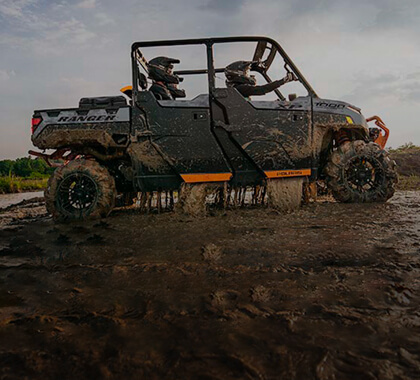Polaris Ranger Tires: An In Depth Analysis
Feb 24th 2019
A Detailed Buyer’s Guide For Polaris Ranger Tires
As much as we here at Everything Polaris Ranger would like to provide you with a simple solution for Polaris Ranger tires, unfortunately, there is no magical one-size-fits-all UTV tire that is perfect in every way and in every situation. An aftermarket Polaris Ranger tire that is optimized for mudding may perform worse that stock tires on sand. And to delve a bit deeper, even categories like sand and mud are slightly vague to say the least. The sand in some places can be fine and circular, while in other places it can be river sand, shaped more like small pea gravel and very thick / heavy. Similarly, mud is also a loaded variable. The depth of the mud, the viscosity of the mud, and the clay content of the mud can all affect the performance of a Polaris Ranger mudding tire. Mississippi river gumbo mud is not the same as mud you’ll find in other places. Despite this fact, we will do our best to parse through these issues to shed some light on what makes a good side-by-side tire. We will also discuss some of our go-to tire brands to increase the performance of your Polaris Ranger; be it a Mid-Size Polaris Ranger that you use for work, or Full-Size Polaris Ranger that you use for family recreation.
Polaris Ranger Mud Tires

Before you decide on a mud tire for your Polaris Ranger, you should first reflect on whether or not you’re a diehard mud rider. Do you proactively seek muddy terrain? Or do you reluctantly ride through mud when you encounter it on the trail? If you’re like most riders we talk to, you’re probably looking for a decent Polaris Ranger mud tire that also works well on hard-pack trails.
BKT Tires, Term Tires, Outback Tires, and Motohavok Tires are common brands that work well both in the mud and on the trail. Of these, Terms tires for the Polaris Ranger stand out due to their versatility. They don’t scrape or puncture on roots, they have good flat-top performance on hard pack, and they grab well in the mud. Big Horn tires are also a common sight in the Polaris Ranger community. They go great in most conditions, and unlike Polaris Ranger tires that are taller and heavier, Big Horns don’t shake or wobble when you go above 30 miles per hour. Kenda Executioners are also tires that will serve you well on those wet and muddy days. But if you do any long-distance driving on dirt or gravel roads, you’ll soon realize the difference between general performance Polaris Ranger tires and domain-specific Polaris Ranger tires designed for particular ground conditions like mud, sand, snow, and asphalt.
Regardless of whether you’re looking for a set of Polaris Ranger 570 tires that’ll get you out of / through the mud when there are no alternative routes open to you, or some Polaris Ranger 900 tires to use during competitive mud-riding events, self-cleaning mud tires always come in handy. Turner Cycle's 8ply Crossbone tires for the Polaris Ranger are good non-tractor-design tires, and Mud Lite tires by ITP are alright for all-around performance as well -- although the latter doesn't have quite as much bite as other mud-specific UTV tires. Intimidator tires by SuperATV are another type of Polaris Ranger tire that riders like. They get the job done in mud and can handle rocks and hill climbs without breaking a sweat. Don't let mud rain on your parade and get some Polaris Ranger mud tires to reign dominant over the muck!
Polaris Ranger Sand Tires

If you’ve ever taken your Polaris Ranger with mud tires onto sand, don’t worry, it’s not just you. Sure some Polaris Ranger mud tires may perform slightly better than others on sand, but there is a reason why they make Polaris Ranger paddle tires. Mud tires tend to dig in, and are simply unable to ride on top of the sand. We’ve seen machines with Mega Mayhem tires -- which perform flawlessly on most other terrain types -- spin out in the sand, unable to gain traction and achieving nothing but rooster tails. Even stock tires perform better that mud-specific UTV tires in the sand.
But if you do find yourself on the brink of a desert ride with nothing but mud tires at your disposal, a little hack you can try is swapping the left and right tires on your Polaris Ranger. The reverse pattern will make them climb on top of the sand instead of digging in ever deeper. And while this might not work in all situations, it is pretty useful if you’re going to a sand-only UTV park or a badlands desert replete with dune after dune.
Polaris Ranger Stock Tire Sizes
Another variable that cannot be generalized is the size of a Polaris Ranger tire. As they say, size isn’t everything. And if you’re running a stock machine without a lift, forward a-arms, or portals, you are limited in terms of tire size. For the old Polaris Ranger body style, the stock tires were 28” on 14” rims. On the new body style, however, the stock tires are 27” and the wheels are 12”. Furthermore, the old Ranger body style had forward a-arms, so you can’t fit 28s on a stock (non HL) Ranger without a lift -- well, technically you can, but they'll probably rub.
Polaris Ranger Tire Pressure

A quick and easy way to alter the performance of your Polaris Ranger tires is to adjust their PSI. If you’re running a lower ply tire, pressures levels around 14psi are good, as low-ply tires lack the thickness to handle lower pressures. If, however, you run higher-ply tires on your Polaris Ranger, you can take you deflate them down to around 8psi before the sidewall will start to bulge. No matter what ply tire you run, we wouldn’t suggest going below 8psi. If you hit a big rock or root, it could contact the wheel and cause serious damage. And it’s much cheaper to fix a popped tire than it is to replace a dented wheel.
But why would you mess around with your side-by-side’s tire pressure? Well, there are many benefits that lower tire pressures can bring. For instance, if you run 8-ply Polaris Ranger tires, the ride can be pretty harsh compared to stock tires. So by deflating the tires a bit, you can achieve a smoother ride as well as handle bumps better. Rock crawling performance gains are one of the biggest beneficiaries of airing down your tires, which mold over rocks more easily at lower pressures. Running a lower tire pressure also gives your Ranger's tires a wider footprint, which means more traction.
Many side-by-side riders aren’t worried about better traction, and are instead concerned about blowing beads, a phenomenon that is never fun, especially when you're in the bush. Lower tire pressures also lower ground clearance, which is yet another issue regarding under-inflated tires. We’ve found that most Polaris Rangers drop around 1/4” for every psi let out, so finding a compromise is important. If you’re not a rock crawler, the improvements in ride quality and traction may not be worth the loss in ground clearance. And if you're riding on pavement, higher tire pressures could exacerbate wear.
Shop our Tire Selection for your Polaris Ranger Mid-Size, Polaris Ranger Full-Size, Polaris Ranger Crew or the Polaris General.
Summing Up
There are still many topics yet to cover about Polaris Ranger tires, and we could go on in this post ad infinitum. Snow tires, tire chains, and power loss / sluggish acceleration from larger tires are all important, and we’ll touch on these as well as many more Polaris Ranger Tire topics in future posts. But until then, keep riding!


